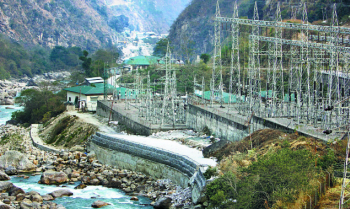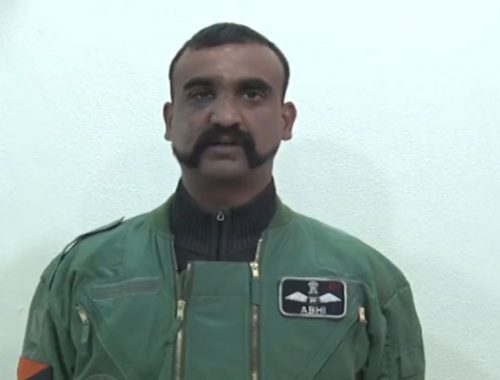Happy Bhutan had unleashed unhappiness in the form of water to the people of Assam for years. While the Union Government and stakeholders are opposing Chinese dams on the Himalayan rivers flowing into India, our government is not concerned over dams built by Bhutan over trans-boundary rivers. On the other hand, the Union government is patronizing hydro projects upstream in complete disregard to the interests of the people of Assam downstream.
by Chandan Kumar Duarah
Prime Minister Narendra Modi, on his second visit to Bhutan, inaugurated the Mangdechhu hydroelectric power plant in Thimphu on Saturday and also launched stamps to commemorate five decades of India-Bhutan hydropower cooperation.
With the inaugural of 720MW Mangdechhu Hydroelectric Plant and opening of official discussion on the Sunkosh, the biggest project targeted, Indian Prime Minister Narendra Modi’s visit is in a way commemorating five decades of hydropower cooperation between Bhutan and India.
“I am very happy to come to Bhutan at the beginning of my second term,” Mr. Modi said in a joint press statement after delegation-level talks with his Bhutanese counterpart at the historic Simtokha Dzong. The two countries signed 10 MoUs in the fields of space research, aviation, IT, power and education.
The commissioning of Mangdechhu takes Bhutan’s installed power capacity to 2,326 MW from 1,606, an increase by 44.8 percent. Mangdechhu is the fourth project implemented under inter-government (IG) model.
The first project under the IG model was 336MW Chukha project financed with 60 percent grant and 40 loan grant from the government of India and commissioned in 1986.
The 1,020MW Tala and 60 MW Kurichhu were other projects implemented under IG model. The two projects of Punatshangchhu are also being implemented under the IG model with 70 percent loan and 30 percent grant.
Sunkosh, which has the potential to generate over 2,500MW of power is the priority for the government currently. Discussions during PM Modi’s visit revolves around the modality of implementation and financing.
But Dams in Bhutan continues to be a nightmare downstream, having created havoc at regular intervals. In the last 10 years, over one lakh families were rendered homeless while more than one lakh hectares of farmland were devastated in the downstream districts of Baksa, Bongaigaon, Barpeta, Kokrajhar, Chirang and Nalbari.
But Modi’s stand with Bhutan makes a grave concern to downstream people of Assam (India) living along the rivers originates in Bhutan. In last week of July, after a little relief, the flood situation has deteriorated once again in Assam with Bhutan releasing the excess water from 55 meter tall dams in eastern Bhutan adjoining western Assam.
Although there is an agreement between India and Bhutan to share information on the release of water from the Kurichu dam, Bhutan allegedly continues to release water from the dam without sharing the information with the Indian (Assam) authorities. There are instances when unannounced release of water Kurichu dam by Bhutan jeopardized the lives of thousands of people downstream.
The sudden surge of water release again caught Assam authorities off-guard. It so happens that during incessant rains, waters from the dam is released flow down to Assam. In July this year, there was a sudden rise in the water levels of the Beki river that washed away a part of the embankment at Panchmile, inundating the entire Manas National Park.
Last month Druk Green Power Corporation Limited (DGPC) of Bhutan, which runs the 60MW Kurichhu project in eastern Bhutan, had announced that it would release excess water from its dam. Several flood-affected districts in lower Assam are on alert following the release of excess water from the dam of Kurichhu hydropower plant in Bhutan early on July 25 morning.
In Barpeta district, the administration has sounded a red alert for people residing on the banks of the Beki and Pahumara rivers appealing them to move to higher and safer locations.
Further, the threat of Kurichu looms large on pristine wildlife habitats like Manas—a world heritage site, an elephant project, a tiger project and a biosphere reserve.
Situated on the western flanks of Assam, Manas National Park is one of the most vibrant forest ecosystems in India. Situated on the foothills of the eastern Himalayas, brushing the Bhutan border, this pristine and primordial wilderness reserve is a treasure trove of bio diversity.
Situated on the foothills of the eastern Himalayas, brushing the Bhutan border, this pristine and primordial wilderness reserve is a treasure trove of bio diversity. Conservation activists voiced the concern of the downstream people. The situation prevailing in Manas is likely to happen in wildlife habitats of upper Assam when hydro electric power projects are commissioned in China, Butan and Arunachal Pradesh (India).
Happy Bhutan has been unleashing unhappiness in the form of water to the people of Assam for years without informing concerned authorities except last time. While the Union Government and stakeholders are opposing Chinese dams on the Himalayan rivers flowing into India, our government is not concerned over dams built by Bhutan over trans-boundary rivers.
Conservationist activists expresses the concern of the downstream people and the situation prevailing in Manas is likely to happen in wildlife habitats of upper Assam when hydro electric power projects are commissioned in China and Arunachal Pradesh.
It is another matter of concern that on July 18, 2019 the Cabinet Committee on Economic Affairs (CCEA), chaired by Prime Minister Narendra Modi, gave the go-ahead to the Dibang hydropower project in Arunachal Pradesh. Pegged at a capacity to yield 2,880 megawatts, the project is going to be India’s largest hydropower venture. When completed, it would reach the elevation of a staggering 278 metres – also making it the world’s tallest concrete gravity dam.
The central government has decided to build the project without any public consultation or study of the potential impacts in downstream Assam state. Anti-dam activists are now concerned Modi’s government will now push ahead with a series of mega dams planned in the northeast region, ignoring all expert and advisory committees in an attempt to harness “green” hydropower.
The Dibang is just one of 168 massive dams slated to produce 57,000 megawatts of hydropower in Assam and Arunachal Pradesh states. This strategically important region, which borders Myanmar in the east, Bhutan in the west and China in the north, is described by politicians as India’s ‘future powerhouse’ and is a key focus point of the country’s dam building programme.
China is involved in a major dam building programme on its side of the border, also using the waters of the Brahmaputra – which it calls the Yarlung Tsangpo. China’s plans to build a massive dam three times the size of the Three Gorges Dam on the Great Bend before the river swings round into India.
The Brahmaputra is one of the world’s major rivers, winding across the Tibetan Plateau through China, India and Bangladesh before joining with the Ganga and flowing out into the Bay of Bengal.
The dam building programme in north-east India has been highly controversial. Opponents say it not only ignores geological and ecological factors – it also fails to take into account the impact of climate change in the region.
Experts also say no proper overall plan has been put in place: though India and China have signed a limited agreement to data on river flow, there is no specific deal on managing the Brahmaputra’s waters.
Protests about the dams have been growing, with work on the 2,000 megawatt Lower Subansiri dam on one of the Brahmaputra’s tributaries – repeatedly held up.
Broken promises
In the build up to 2014 elections, Narendra Modi held a rally in Pasighat in the East Siang district of Arunachal Pradesh in February where he acknowledged peoples’ concerns about large dams and committed to developing small hydropower instead.
“I know citizens of the region are against large power projects,” he had said. “I respect your sentiment. But hydropower can also be harnessed using smaller projects, while protecting the environment” Modi pretended.



